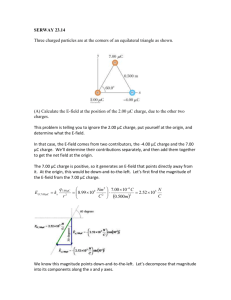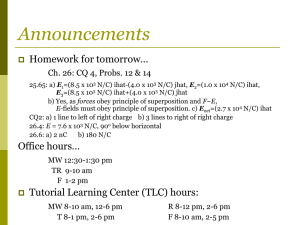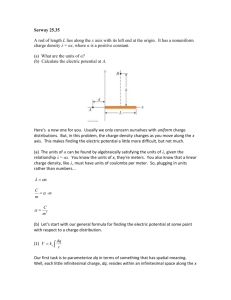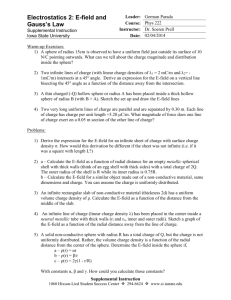23.26
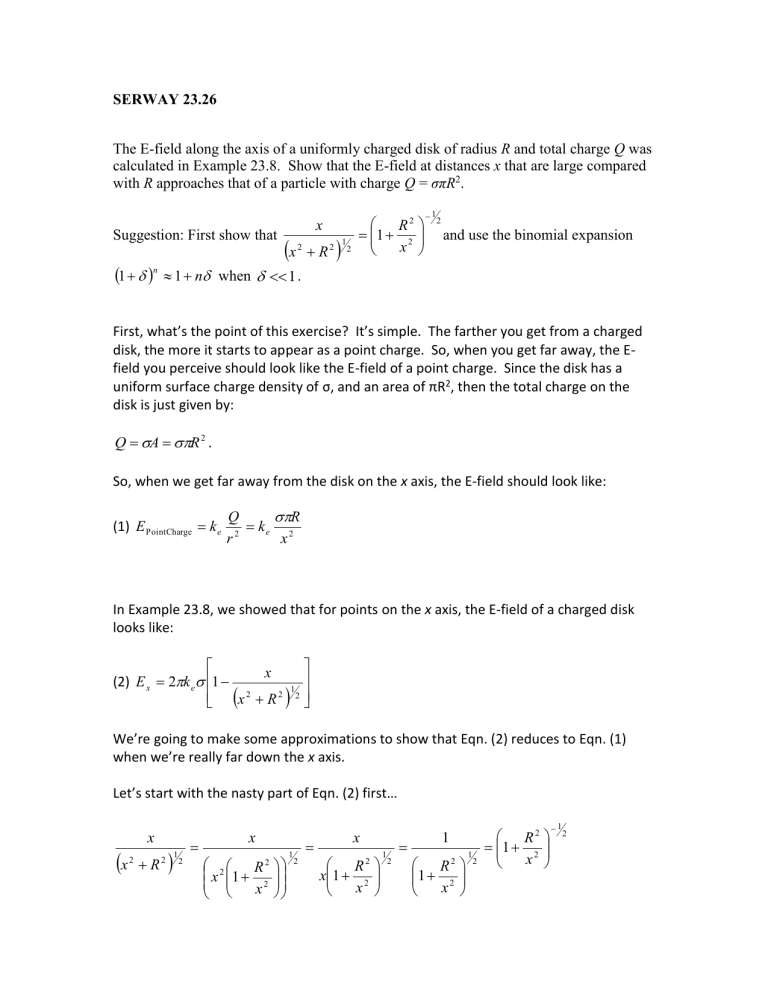
SERWAY 23.26
The E-field along the axis of a uniformly charged disk of radius R and total charge Q was calculated in Example 23.8. Show that the E-field at distances x that are large compared with R approaches that of a particle with charge Q =
σπR 2
.
Suggestion: First show that x
x
2
R
2
1
2
1
n
1
n
when
1 .
1
R
2 x
2
1
2 and use the binomial expansion
First, what’s the point of this exercise? It’s simple. The farther you get from a charged disk, the more it starts to appear as a point charge. So, when you get far away, the Efield you perceive should look like the E-field of a point charge. Since the disk has a uniform surface charge density of σ, and an area of πR 2 , then the total charge on the disk is just given by:
Q
A
R
2 .
So, when we get far away from the disk on the x axis, the E-field should look like:
(1) E
Point Charge
k e
Q r 2
k e
R x 2
In Example 23.8, we showed that for points on the x axis, the E-field of a charged disk looks like:
(2) E x
2
k e
1
x
x
2
R
2
1
2
We’re going to make some approximations to show that Eqn. (2) reduces to Eqn. (1) when we’re really far down the x axis.
Let’s start with the nasty part of Eqn. (2) first… x
x
2
R
2
1
2
x
2
1
x
R
2 x
2
1
2
x x
1
R
2 x
2
1
2
1
1
R
2 x
2
1
2
1
R
2 x
2
1
2
So, Eqn. (2) can be rewritten as:
(2) E x
2
k e
1
1
R
2 x
2
1
2
Great. Now, let’s apply an approximation by using the binomial expansion. The binomial expansion says that, as long as
1 , then
1
n
1
n
.
In our case, we’re dealing with
1
R x down the x axis), and n = -1/2. Thus:
2
2
1
2
, so
R
2 x
2
1 (because we’re really far
1
R
2 x
2
1
2
R
2
1
2 x
2
for x >> R.
Plugging this back into (2), we obtain:
E x
2
k e
1
1
R
2
2 x
2
2
k e
R
2
2 x
2
E x
k e
R
2 x
2
, which is what we set out to prove.


